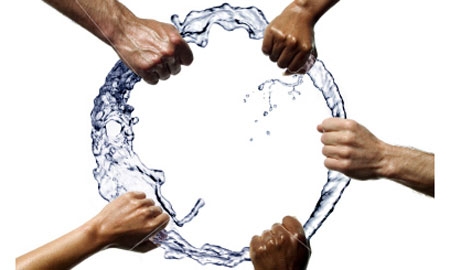Since 2008, the Government and various organisations, including UNICEF, have been hard at work with the “Water for All” project, which aims to supply 80 per cent of the country’s population with drinking water by the end of next year.
One of the main agencies working towards achieving this goal is EPAL, the state-run water supply company of Luanda, who manages the water production and distribution networks, as well as wastewater and sewage treatment processes.
In meeting the World Health Organisation’s high quality standards, EPAL ensures than Luandans have clean water and that the water returned to rivers and streams is untainted, thus protecting the health and safety of both the people and the environment. Indeed, one of the consequences of EPAL’s improved attention to safety has been a notable drop in the cases of cholera since the tragic epidemic of 2006-2008.
Although EPAL works throughout the country and trains technicians in other provinces, it is presently focusing its efforts on the nation’s capital, an enormous task in itself as the drinking water and sewage systems were originally designed for a population of just 600,000 people. Today, more than 4.5 million people call Luanda home.
LUANDA’S WATER AND SEWAGE SYSTEMS WERE ORIGINALLY DESIGNED TO MEET THE NEEDS OF 600,000.
WITH A CURRENT POPULATION OF OVER 4.5 MILLION, HUNDREDS OF THOUSANDS OF CITY RESIDENTS ARE LEFT WITHOUT A SAFE AND CLEAN SUPPLY OF DRINKING WATER
|
Part of the burden on Luanda’s four water treatment stations was lightened last October when a new plant with a capacity of 15,000 cubic metres of water per day was completed.
New water distribution stations – which will afford the treatment plants more outlets and therefore work nearly at full capacity – in Mulemba, Befinca-II and Camama (in the Cazenga, Samba and Kilamba-Kiaxi districts, respectively) have also been very recently finished.
Also, EPAL announced last November plans for two additional distribution stations at Quilonga Grande and Bita. These last two will be the largest in sub-Saharan Africa and are expected to satisfy Luanda’s water demands.
Sadly, water-related disease is not completely wiped out, owing in large part to illegal water distribution channels, especially in neighbourhoods that were built haphazardly without any infrastructure laid out beforehand.
“We could say that on a monthly basis one new neighbourhood arises. These neighbourhoods are being built in areas without water infrastructure,” comments Antonio Belsa da Costa, former CEO of EPAL. Once built and filled, all too often these areas approach EPAL requesting the necessary water infrastructure but it is too late. “People have to be first concerned with the infrastructure and then build,” he says.
The result is that a number of tanker trucks illegally distribute unsanitised water to these populations, and at inflated prices to boot.
Clean water is a clear priority for Angola’s Government, made evident in the budgets over the past few years. Despite cuts in many other areas because of the financial crisis, the water sector saw no reduction and all projects approved are either under way or finished.
Nevertheless, EPAL seeks investors who can help Angola reach its Water for All goals by sharing their expertise and taking over certain technical and repair aspects, to allow EPAL more time to attend to its main activity: production.

0 COMMENTS